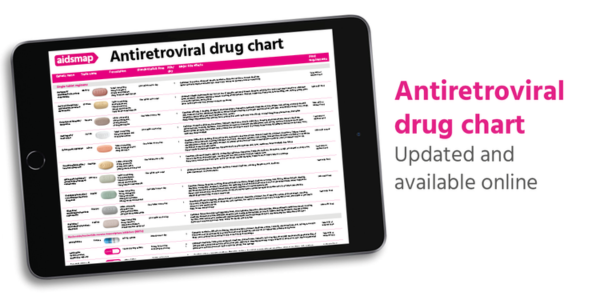Reducing use of crystal meth

Crystal meth (methamphetamine) is a powerful stimulant drug that can be snorted, smoked or injected. It can increase alertness, sex drive, energy and pleasure, but can also cause problems.
A previous study showed that gay and bisexual men who use crystal meth during chemsex were much more likely to have problems than gay men who use other drugs (mostly GHB/GBL and mephedrone) during chemsex. At a London clinic, 84% of men who took crystal meth during chemsex reported negative consequences, compared to 47% of men who used other drugs during chemsex. This included problems with mental health, needing to take time off work, relationship problems, financial problems and overdose. Other research suggests that in men living with HIV, crystal meth is linked to poorer HIV treatment outcomes. This is probably due to poor treatment adherence (not taking medication exactly as prescribed) and increased inflammation.
Some people using crystal meth want to use it less often or to stop using it altogether. But does professional support really help? There has been some doubt about this – in fact, healthcare professionals are unsure of what type of support is most effective.
A new study shows that any substance use treatment is better than none for people who want to reduce their use. The research involved 285 gay and bisexual men in Los Angeles who were taking part in an ongoing research study and reported meth use. Almost two-thirds were living with HIV and 84% were not getting any treatment for their drug use at the beginning of the study.
The researchers placed the participants into three categories: frequent crystal meth use (daily, 19%), occasional use (weekly or less, 57%) and no use (24%). They looked at whether men changed categories over time, and how this related to any treatment received.
Among men who used crystal meth frequently and did not receive any substance use treatment, 33% reduced their use.
In contrast, 65% of men who used crystal meth frequently and had substance use treatment reduced their use. This included both people who switched to occasional use, and those switching to no use.
One problem with this research is that we don’t know the details of the substance use treatment that men received. But maybe that doesn’t matter.
"Treatment of some kind seems to work,” say the researchers. “We can’t really say what the mechanism is but maybe just being connected to the treatment system is valuable in itself.”
Interactions between HIV treatment and recreational drugs

When two drugs are taken at the same time, their interaction can affect the drugs’ effectiveness and side effects. This is the case both for prescribed medicines and recreational drugs.
Ritonavir and cobicistat are the two anti-HIV drugs most likely to be involved in harmful interactions with recreational drugs, including crystal meth. Find out more in our page on aidsmap.
Treatment for HIV-2

There are two major types of HIV. The vast majority of people living with HIV have what is known as HIV-1. This was discovered first, is the most widespread and is the focus for medical research.
A much smaller group of people have HIV-2, which is a different virus. HIV-2 is found mostly in west Africa, and in people of west African origin living in other countries. HIV-2 causes a milder disease than HIV-1 and many people feel well for several years without treatment. Although it seems that people with HIV-2 may benefit from earlier treatment, the jury is still out.
Most of the same medications used to treat HIV-1 are used to treat HIV-2, but some don’t work at all against it. One challenge is that there are very few studies looking at which medications are most effective.
Guidelines often recommend the HIV medication dolutegravir (Tivicay) as part of the treatment for people with HIV-2 and Portuguese doctors have recently reported on their experience using this drug. In the study, people with HIV-2 took dolutegravir along with two other medications: most people took dolutegravir, abacavir and lamivudine (this combination is available in a single pill called Triumeq). Some others took dolutegravir alongside tenofovir disoproxil plus emtricitabine (also available as a combination in Truvada).
Over half of the 30 participants had complete success with the treatment after one year. The researchers defined complete success as an increase in their CD4 count (a marker of the strength of their immune system), an increase in their CD4-to-CD8 ratio (a different marker of the strength of their immune system) and having an undetectable viral load.
Despite the good results, this was a small study and it didn’t include a group who didn’t receive dolutegravir. We now need more and larger studies to help clarify the best treatment options for people with HIV-2.
Antiretroviral drug chart

We have published a new edition of our Antiretroviral drug chart. The chart is a one-page reference guide to all the anti-HIV drugs licensed for use in the UK or European Union, with information on formulation, dosing, key side effects and food requirements.
Anal cancer

Anal cancer is a rare cancer, caused by cancer-causing strains of human papillomavirus (HPV). The HPV vaccine that protects against cervical cancer also protects against anal cancer, but HPV is widespread among people with HIV. Having HPV and HIV at the same time increases the risk of developing anal cancer.
A recent study tracked almost 25,000 people who had anal cancer in the US, including 2662 who were living with HIV. While many more men than women living with HIV were affected by anal cancer, outcomes were poorer for women.
Five years after diagnosis with anal cancer, 80% of men with HIV were alive, compared to 72% of men without HIV. In other words, men living with HIV were more likely to survive.
But the opposite was true for women. Five years after diagnosis, 74% of women with HIV were alive, compared to 80% of women without HIV.
These results may seem surprising. The researchers think that increased awareness among healthcare providers of the need to screen gay and bisexual men with HIV for anal cancer may explain these differences. When anal cancer is spotted earlier, treatment is more likely to be successful.
Videos

Have you visited our Videos pages on aidsmap?
Here, you can find all our broadcast series – aidsmapCHAT, aidsmapLIVE, aidsmapWOMEN and Health & Power – as well as short information videos providing facts on HIV topics and video interviews with leading scientists about their latest research.
Migrants living with HIV in Europe

Is there equality in HIV treatment outcomes for people living with HIV who are born abroad? In other words, do migrants do as well as people living in their country of birth?
For the UK, the answer is yes. It’s estimated that 96% of migrants living with HIV have been diagnosed, 99% of those diagnosed are on treatment and 97% of those on treatment are virally suppressed. But the UK is one of only a handful of countries in Europe which monitor these outcomes in relation to migration status.
There’s a little more information about PrEP (regular medication to prevent HIV infection). Still, of 22 countries with PrEP programmes, only eight could share any data on uptake by migrants specifically. In almost all of them, uptake was much lower than it needs to be.
The result is that migrants are being left behind, and increasing numbers of HIV diagnoses are in people born abroad. In 2022, 52% of new diagnoses in Europe were in people born in another country – this includes 23% born in other countries in central and eastern Europe (including many born in Ukraine), 14% born in sub-Saharan Africa, 11% from Latin America and the Caribbean, and 3% from other countries in western Europe.
From 2012 to 2021, new diagnoses in gay and bisexual men living in their country of birth fell by a third. In contrast, it increased in gay and bisexual migrants by a third.
Access to the NHS for migrants

Understanding which National Health Service (NHS) treatments and services are freely available for people born outside of the UK can be confusing.
Our recently updated page explains which people always receive free treatment, treatment that is always free, secondary care, healthcare charges and information sharing.
Editors' picks from other sources
Jailed for missing a court date, he died after not being given his HIV medicine, suit says | Los Angeles Times
An inmate in a California jail died after not receiving vital HIV medication for weeks, a new lawsuit claims.
With harsh anti-LGBTQ law, Uganda risks a health crisis | The New York Times
The country had made great progress against HIV. Now terrified patients have fled clinics, and experts fear a resurgence.
With immediate treatment of HIV, semen viral load drops rapidly, reports small study | TheBodyPro
Starting antiretroviral treatment immediately upon HIV diagnosis not only helps preserve a person’s health, but also quickly reduces semen viral load to levels where the virus is unlikely to be transmitted, according to the results of a small study conducted in Peru.
